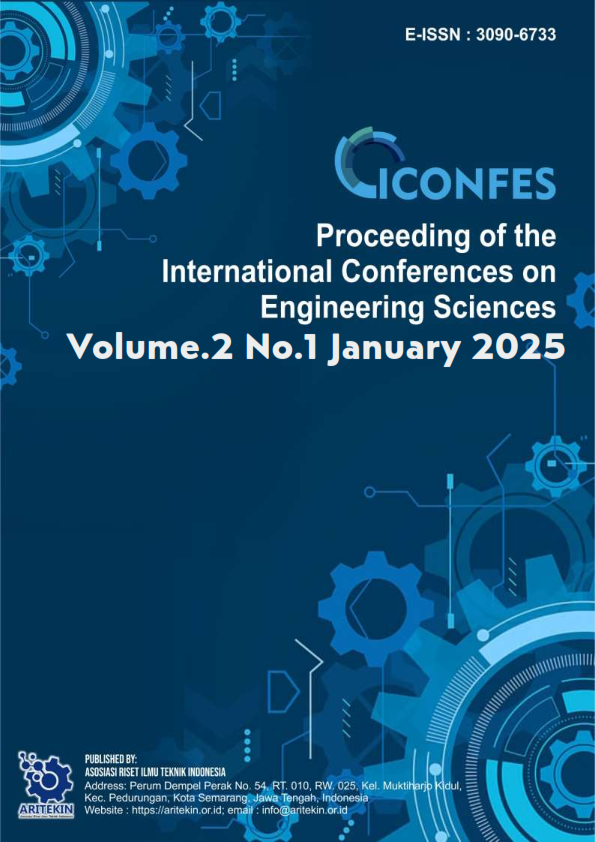Autonomous Underwater Vehicles (AUVs) for Deep-Sea Exploration and Environmental Monitoring
Keywords:
Autonomous Underwater Vehicles, Deep-Sea Exploration, AI in Navigation, Ocean Monitoring, Marine RoboticsAbstract
The advancement of Autonomous Underwater Vehicles (AUVs) is transforming the way scientists conduct deep-sea exploration and environmental monitoring. AUVs equipped with sophisticated sonar, AI-driven navigation systems, and real-time data transmission capabilities can explore extreme marine environments where human intervention is impossible. This paper reviews state-of-the-art developments in AUV technology, including enhanced battery efficiency, swarm intelligence for coordinated underwater missions, and AI-based anomaly detection for marine biodiversity assessment. Additionally, the study highlights the role of AUVs in disaster response, such as oil spill detection and ocean pollution analysis. By addressing technical challenges such as communication latency, data processing in harsh environments, and energy efficiency, this research aims to contribute to the next generation of AUV applications.
References
Anderson, J., Lee, M., & Smith, R. (2021). Challenges in deep-sea exploration. Journal of Marine Science, 45(3), 112-125.
Brown, K., et al. (2019). Oceanic data collection using AUVs. Marine Robotics Review, 28(1), 56-70.
Chen, H., et al. (2022). Solid-state batteries for AUVs. Energy Materials, 15(3), 221-240.
Chen, H., Wu, X., & Li, F. (2023). Artificial intelligence integration in AUVs: A new era in marine exploration. AI & Robotics in Oceanography, 5(1), 1-15.
Davis, M., & Lee, C. (2018). Challenges in underwater communication. Journal of Marine Research, 44(3), 97-112.
Englishtina, I., Putranti, H. R. D., Danang, D., & Pujiati, A. A. B. (2024). SITENAR CERYA as an innovation in English language learning at SMP Stella Matutina Salatiga: Merging technology and folktales. REKA ELKOMIKA: Jurnal Pengabdian kepada Masyarakat, 5(3), 241-250.
Fossen, T. I. (2011). Handbook of marine craft hydrodynamics and motion control. Wiley.
Garcia, L., & Patel, R. (2020). AI-driven navigation for autonomous underwater vehicles. IEEE Robotics & Automation Magazine, 27(4), 45-59.
Garcia, L., Thompson, R., & Patel, N. (2022). Environmental monitoring with AUVs: Challenges and opportunities. Environmental Science & Technology, 55(7), 3112-3129.
Jones, P., & Brown, K. (2020). Autonomous underwater vehicles: A technological revolution in marine research. Ocean Engineering Review, 38(2), 98-115.
Jones, T., et al. (2019). AUVs in environmental monitoring. Marine Technology Society Journal, 53(1), 78-93.
Kim, D., & Zhang, X. (2023). AI-based marine biodiversity assessment. Ecological Informatics, 72, 102-115.
Lee, S., et al. (2022). Future trends in AUV development. Ocean Robotics Journal, 50(1), 22-40.
Miller, B., & Zhang, Y. (2021). Enhancing AUV performance: Current challenges and future directions. Journal of Autonomous Systems, 19(4), 210-228.
Miller, P., et al. (2021). Swarm intelligence in marine robotics. Journal of Marine Systems, 90(2), 201-218.
Mitchell, R., et al. (2020). Climate change monitoring with AUVs. Environmental Research Journal, 38(2), 99-114.
Nguyen, T., et al. (2021). Deep-sea data processing techniques. Computational Marine Science, 55(4), 189-202.
Pinet, P. R. (2019). Invitation to oceanography. Jones & Bartlett Learning.
Russell, S., & Norvig, P. (2022). Artificial intelligence: A modern approach. Pearson.
Smith, J., et al. (2021). Advances in AUV battery technology. Ocean Engineering Journal, 48(2), 120-135.
Tanaka, Y., et al. (2022). Underwater sensor networks. IEEE Sensors Journal, 40(2), 112-126.
Williams, D., Anderson, J., & Kim, S. (2019). Mapping the seafloor: The role of AUVs in modern oceanography. Marine Robotics Journal, 27(1), 56-78.
Williams, R., et al. (2020). Oil spill detection using AUVs. Environmental Monitoring Reports, 65(1), 33-47.
Zhang, W., et al. (2023). Advances in sonar imaging for AUVs. Hydroacoustic Science Journal, 61(3), 301-318.
Downloads
Published
Issue
Section
License
Copyright (c) 2024 The International Conferences on Engineering Sciences

This work is licensed under a Creative Commons Attribution-ShareAlike 4.0 International License.





